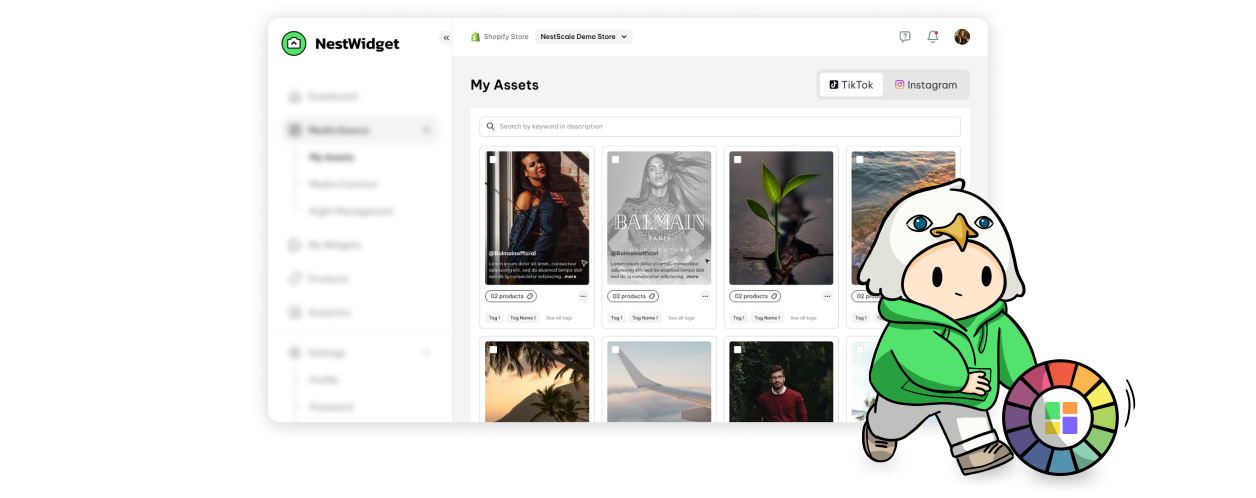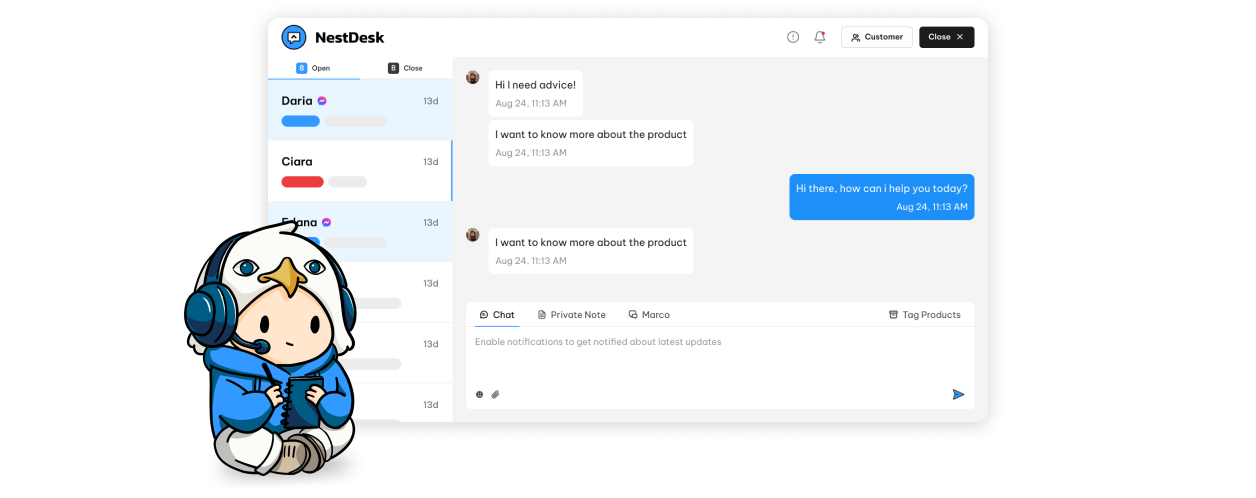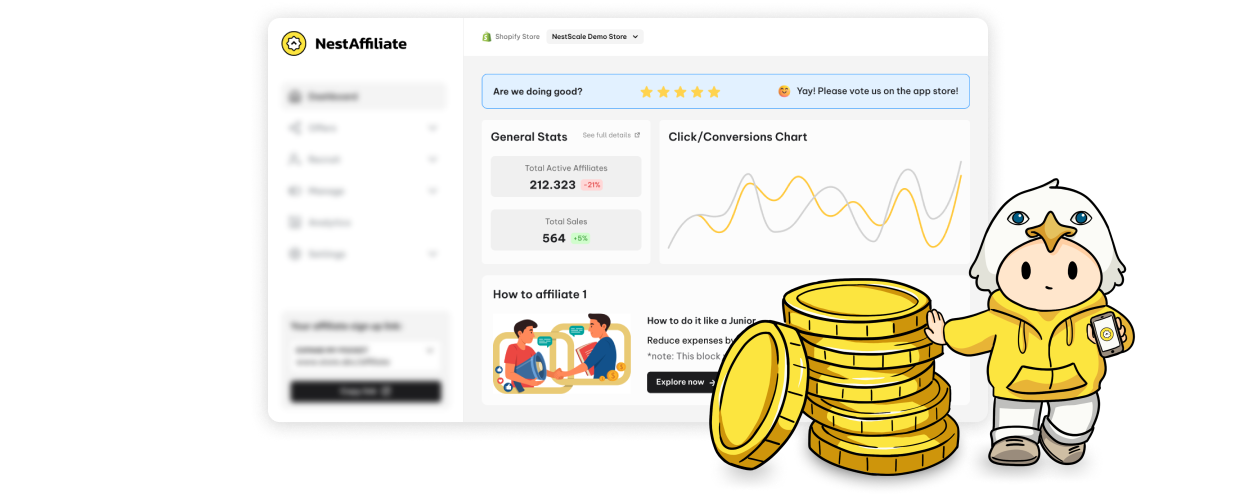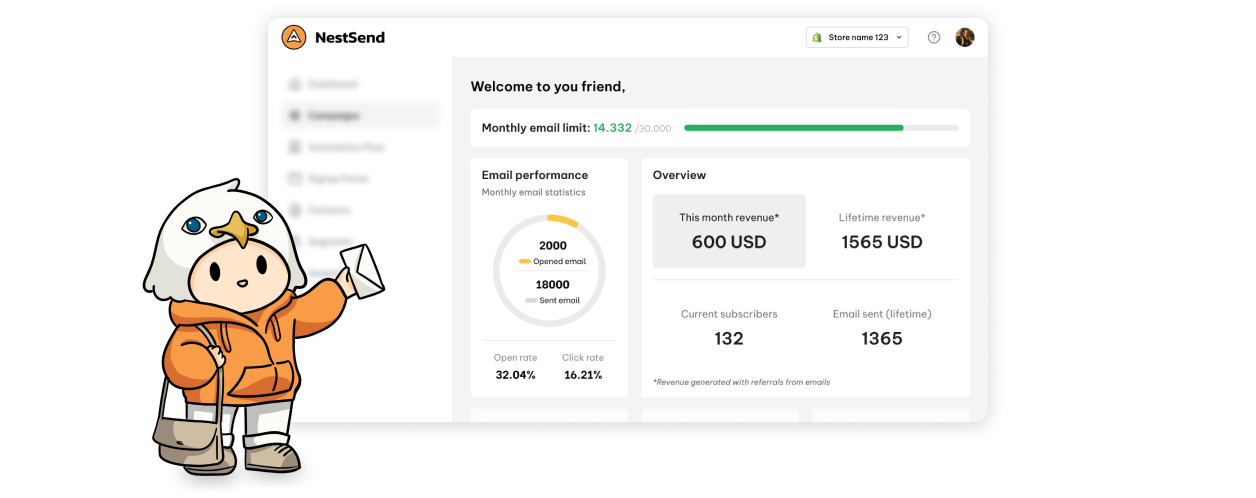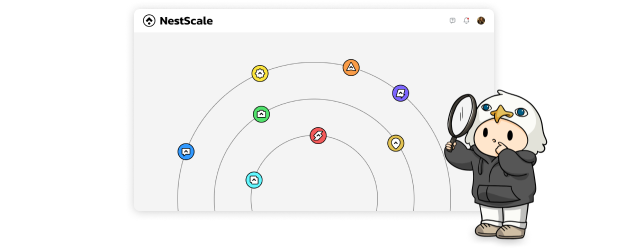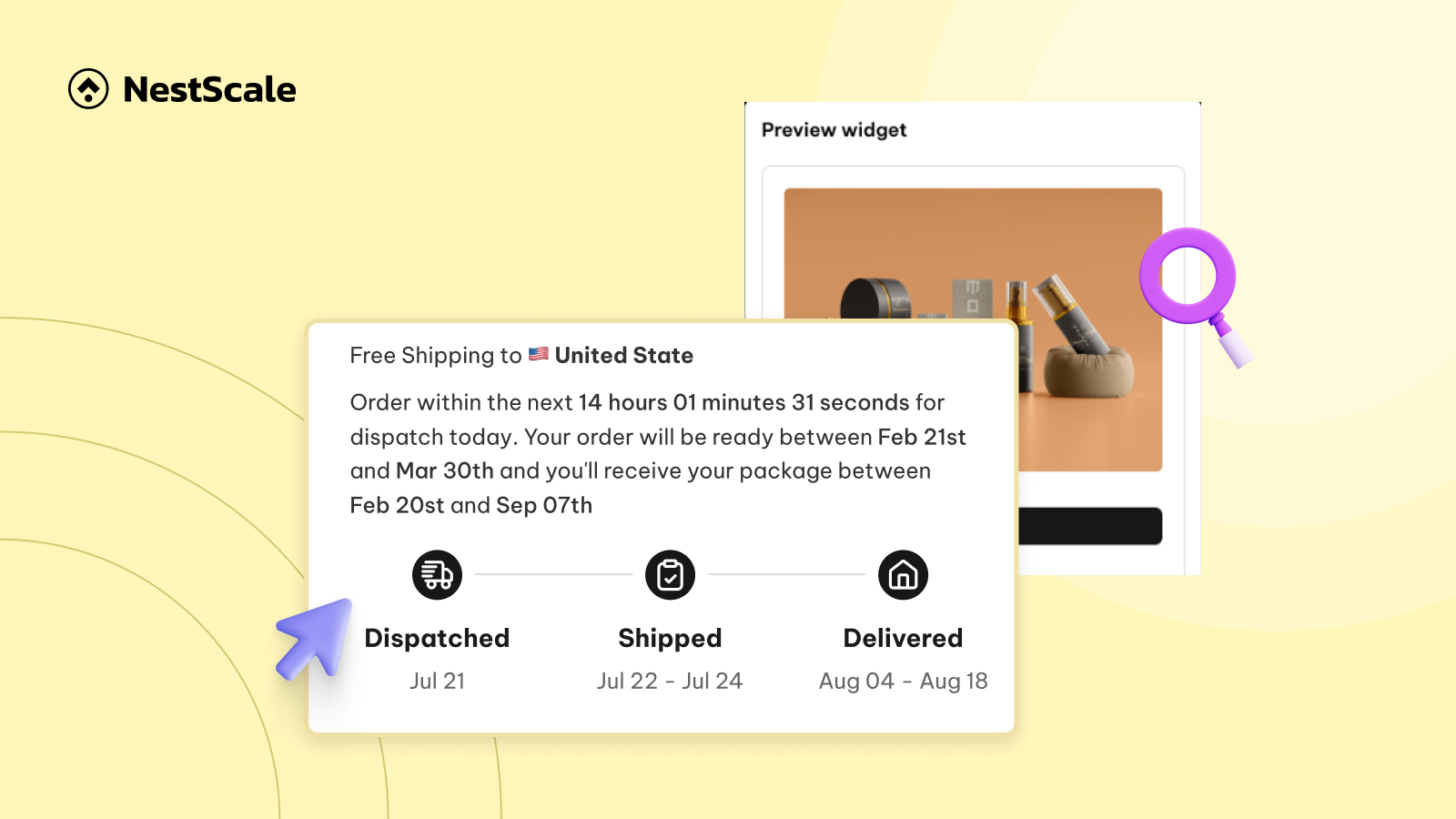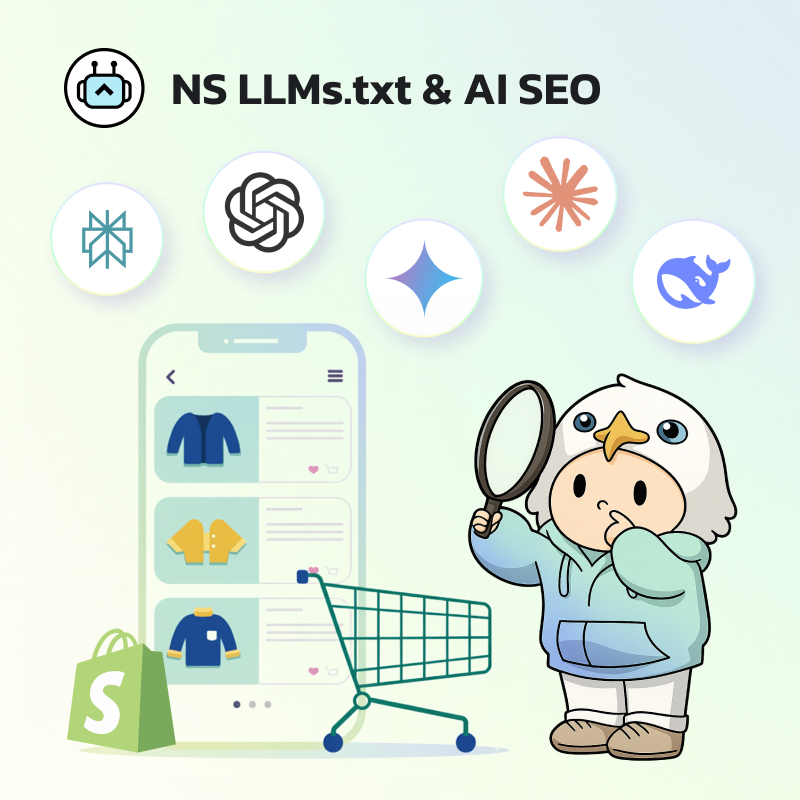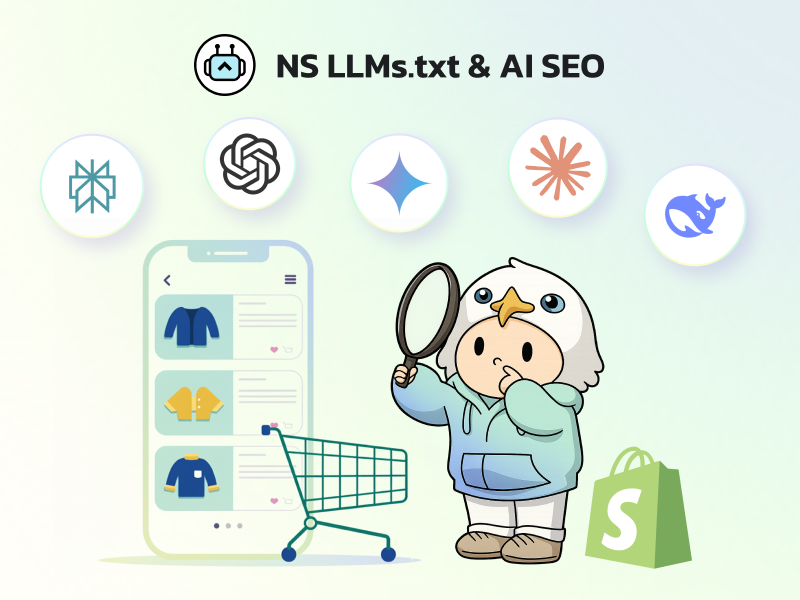Looking for a Shopify App to Manage Delivery Dates across Multiple Stores? If you’re a Shopify merchant operating in different regions, you’ve likely faced the headache of inconsistent delivery timelines. From time zone differences and regional holidays to managing separate fulfillment centers, keeping delivery communication accurate across multiple storefronts can quickly become overwhelming.
By the end of this article, you’ll discover 3 powerful apps to reduce support work, build customer trust, and manage delivery across your Shopify stores more easily.
Challenges in multi-store delivery management
When you’re running multiple Shopify storefronts, delivery date management becomes fragmented and much harder than it seems on the surface. Each store may serve different markets with unique logistical realities, making it difficult to maintain consistency in delivery communication.
Below are the key reasons why this complexity quickly adds up:

Time zones & cutoff confusion
When your Shopify stores serve different countries or regions, time zone differences create hidden complexity in order processing. Each region operates on its own clock, meaning that a single global cutoff time can unintentionally exclude customers in other locations. If your delivery estimates are not adjusted based on where the shopper is located, they may place an order expecting same-day processing, only to discover later that the cutoff has already passed.
In addition, weekends and working hours differ across markets, making it even more important to localize cutoff times to avoid confusion or dissatisfaction.
Multiple fulfillment centers
Using different fulfillment centers across multiple stores can improve shipping efficiency, but it also introduces a layer of operational complexity. Each center may have its own processing speed, daily cutoff time, and available carriers. If your store does not reflect these differences in the delivery information shown to customers, you risk creating unrealistic expectations and inconsistent post-purchase experiences.
The key challenge is aligning fulfillment logic with what each customer sees, without exposing backend complications.
Holiday mismatches
Public holidays affect delivery schedules differently depending on the region. Carriers may pause operations, and fulfillment centers often operate with limited staff or close entirely. If your delivery dates do not take local holidays into account — both at the origin and destination — you risk providing estimates that are not achievable.
This is especially critical during year-end peak seasons or when serving international customers across different cultural calendars.
How does it affect customers and internal teams
When delivery dates aren’t clearly or accurately shown across multiple Shopify stores, the impact can be felt across the entire business. Cart abandonment increases, as unclear shipping timelines remain one of the leading reasons shoppers leave at checkout.
Meanwhile, your support team is burdened with repetitive inquiries like “Will this arrive on time?”—taking focus away from higher-value tasks. There’s also a disconnect between marketing and operations: while your ads may promise fast delivery, actual fulfillment delays create a gap in expectations.
Over time, these inconsistencies erode customer trust, and once that trust is broken, it’s difficult to regain. Whether you’re a small merchant with regional stores or a fast-scaling DTC brand, these delivery misalignments directly impact customer experience and internal efficiency.
Best apps to manage delivery dates across multiple Shopify stores
Managing delivery expectations across multiple Shopify stores can be tricky without the right tools. Fortunately, these Shopify apps to manage delivery dates across multiple stores are designed to simplify logistics, boost customer trust, and streamline your operations.
NS Estimated Delivery Date
To overcome these challenges, merchants need a scalable, store-aware system that brings consistency to delivery communication. That’s where NS Estimated Delivery Date comes in. Designed specifically for Shopify merchants, this no-code solution helps unify and automate delivery timelines across multiple storefronts.
Key feature:
- Set estimated delivery dates for specific products and collections.
- Configure working days, cut-off times, and holidays to show accurate arrival times.
- Customize responsive widgets with text settings, padding options, and date formats.
- Add clear delivery timeline widgets to product, cart, and checkout pages.
- Automatically display delivery dates based on the customer’s location and time zone
C‑EDD: Estimated Delivery Date
C‑EDD: Estimated Delivery Date is a flexible and user-friendly Shopify app to manage delivery dates across multiple stores, giving merchants full control over how and where delivery timelines are shown. Designed to streamline the shopping experience and reduce delivery-related confusion, C‑EDD helps you create clear, location-based delivery expectations that build trust and boost conversion.
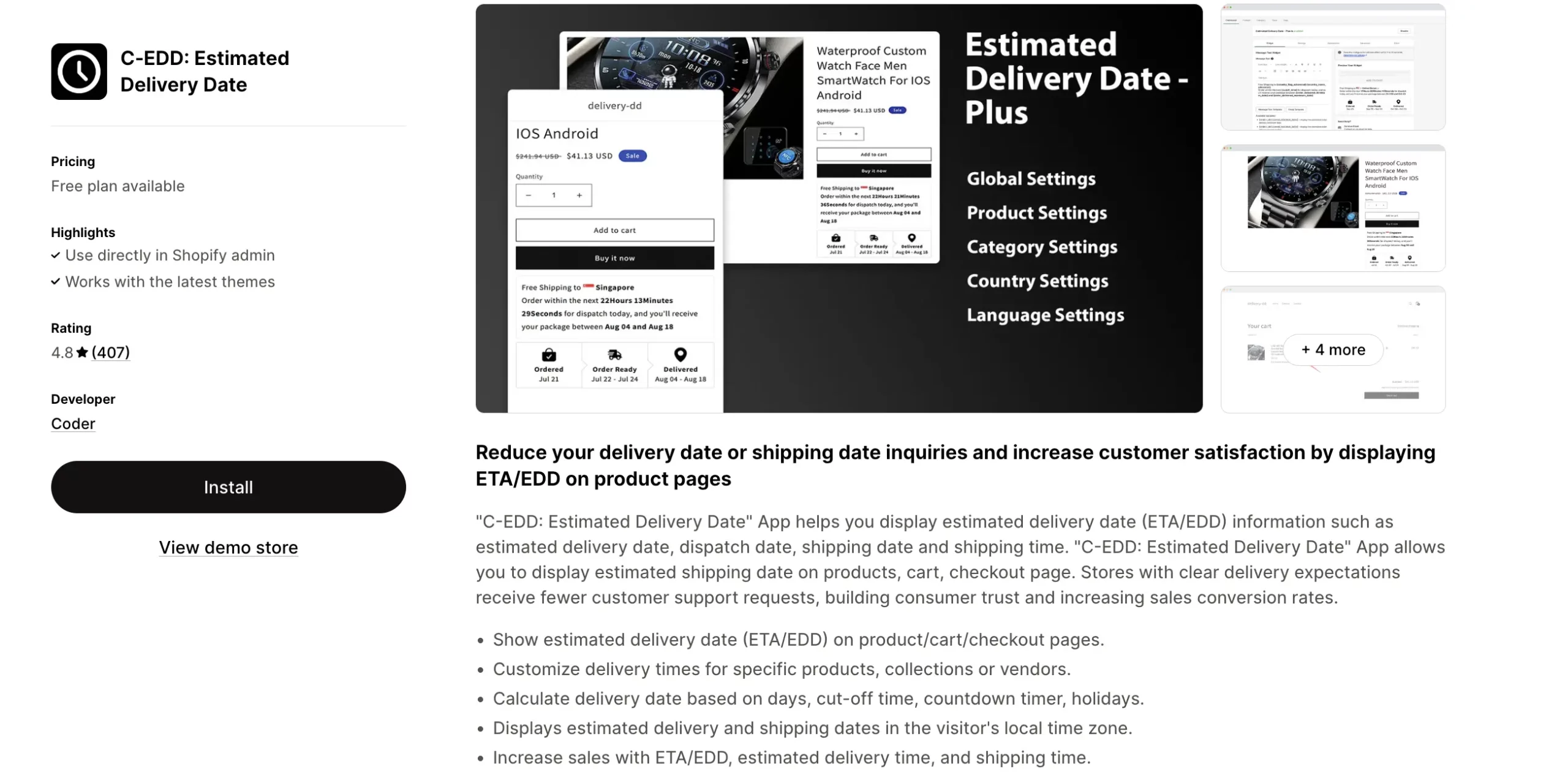
Key features:
- Set estimated delivery dates for individual products or collections based on rules you define.
- Configure business days, cut-off times, and excluded holidays to reflect real fulfillment conditions.
- Auto-detect customer location to show accurate delivery dates by country or region.
- Customize display text, date formats, and widget styling to match your brand’s design.
- Display delivery information directly on product pages and optionally on cart and checkout pages
SB Estimated Delivery Date ETA
SB Estimated Delivery Date ETA is a powerful Shopify app to manage delivery dates across multiple stores, helping merchants provide clear and accurate delivery timelines without any coding required. Whether you’re operating one storefront or managing several for different regions, the app lets you customize delivery rules and automate date displays based on real-time logistics — all while keeping the shopping experience seamless for your customers.
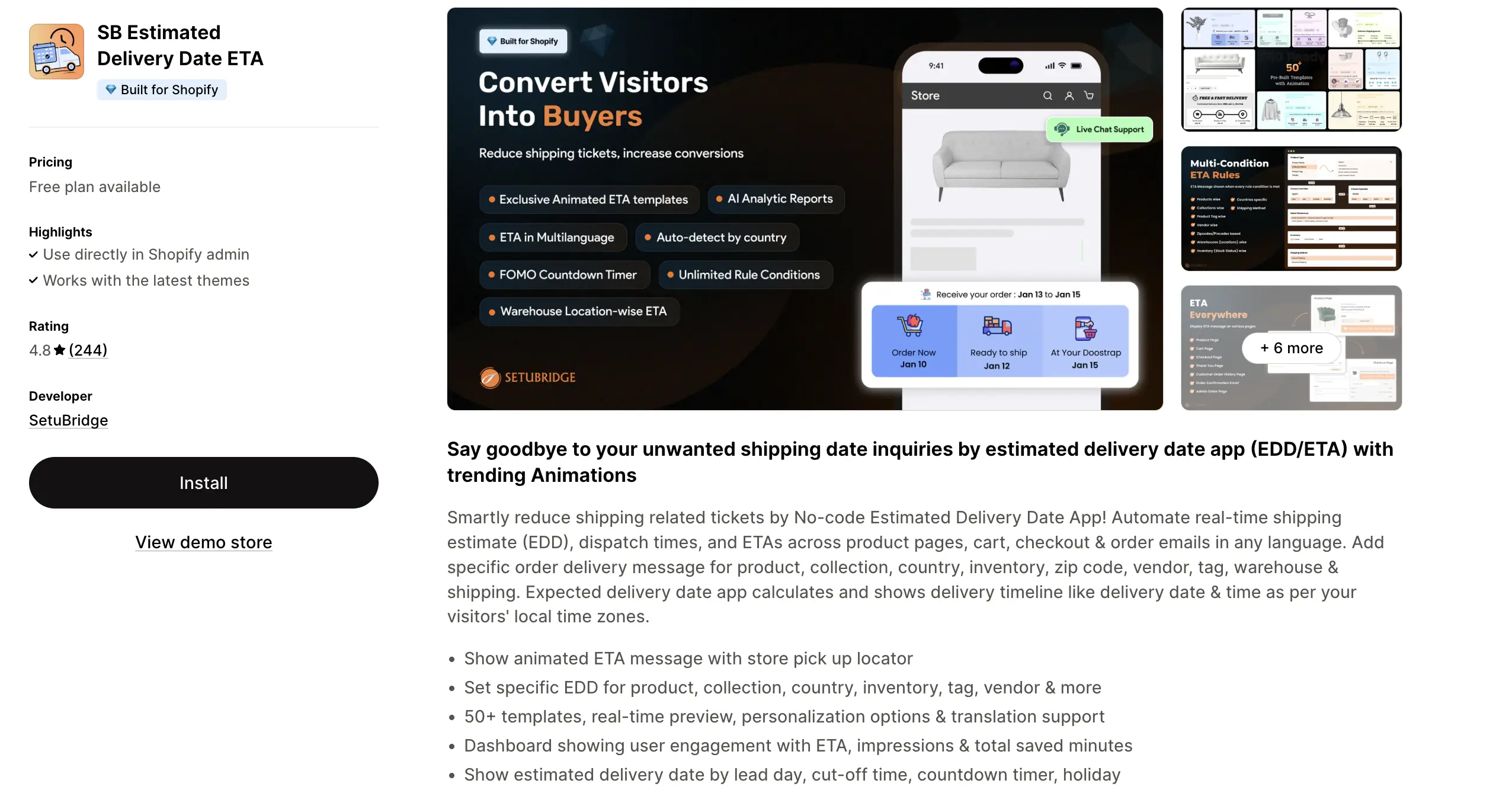
Key features:
- Set estimated delivery dates by product, collection, or shipping method.
- Define working days, cut-off times, and holiday exclusions for each store’s schedule.
- Automatically adjust delivery dates based on the customer’s location and time zone.
- Fully customize widget design, including padding, text content, and date format.
- Show delivery info across product, cart, and checkout pages to improve transparency and reduce support inquiries.
FAQs
Can I manage different delivery times for each of my Shopify stores?
Yes. If you’re running multiple Shopify stores targeting different regions, you can create delivery rules specific to each store’s location, time zone, and product setup. Tools like NS Estimated Delivery Date let you automate this using rule-based settings without needing custom code.
Can Shopify delivery date apps handle local delivery, store pickup, and shipping with date and time selection?
Yes, many advanced Shopify delivery date apps support multiple fulfillment methods, including local delivery, in-store pickup, and standard shipping. These apps often let customers choose both the delivery or pickup date and time during checkout, helping you provide a more flexible and customer-friendly shopping experience.
Are there Shopify apps that allow managing delivery dates and pickup times across multiple stores with synchronization?
Yes. Some apps are built to support multi-store environments, letting you set and sync delivery rules, pickup schedules, and holiday settings across several Shopify storefronts. For example, NS Estimated Delivery Date helps you manage store-specific rules while keeping your delivery communication consistent and centralized without needing to manually update each store.






